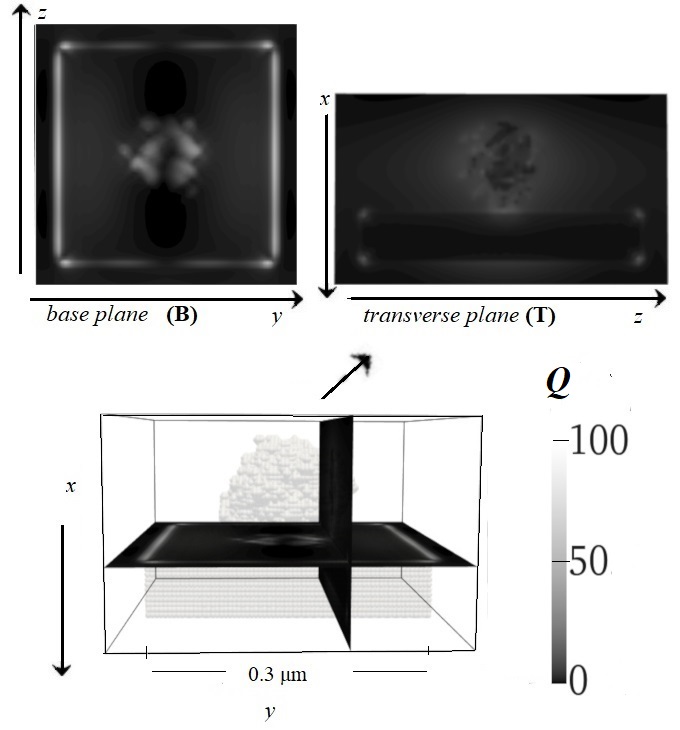Nanosystems: Phys. Chem. Math., 2022, 13 (1), 56–61
Near-field optical patterns of dielectric nanoparticles deposited on a metallic surface
Rakesh K. Rai – B. R. A. Bihar University, Muzaffarpur, India; rakesh2273@gmail.com
Robert S. Botet – Université Paris-Saclay, Orsay, France; robert.botet@u-psud.fr
Corresponding author: Rakesh K. Rai, rakesh2273@gmail.com
DOI 10.17586/2220-8054-2022-13-1-56-61
PACS 78.67.Sc, 78.67.Bf
ABSTRACT Spatial structures of electromagnetic near-fields generated by plasmonic resonances are studied through numerical simulations. Resonances can appear in silver nanoplates onto which nanoparticles of various shapes are deposited. For forthcoming biophysical applications, nanoparticles are considered here as irregular aggregates of grains made of DNA material. The Discrete Dipole Approximation technique is used to calculate the electromagnetic field profiles. In certain controlled physical situations, the plasmonic pattern appears to be the glowing anti-shadow of the deposited nanoparticle, and such a pattern locally produces strong increase in the electromagnetic fields. Even when the nanoparticle size is much smaller than the wavelength, fine (sub-wavelength) details of the anti-shadow are directly related to the shape of the nanoparticle. These observations should result in a better understanding of the Surface-Enhanced Raman Scattering process and an improvement in nanocharacterization techniques.
KEYWORDS light scattering, discrete dipole approximation, DNA materials, nanoparticles
FOR CITATION Rai R.K., Botet R.S. Near-field optical patterns of dielectric nanoparticles deposited on a metallic surface. Nanosystems: Phys. Chem. Math., 2022, 13 (1), 56–61.
[In Russian] Р.К. Рай, Р.С. Ботет
Оптические картины ближнего поля диэлектрических наночастиц, нанесенных на металлическую поверхность
АННОТАЦИЯ С помощью численного моделирования исследованы пространственные структуры электромагнитных ближних полей, генерируемых плазмонными резонансами. Резонансы могут возникать в серебряных нанопластинках, на которые нанесены наночастицы различной формы. Для будущих биофизических приложений наночастицы рассматриваются здесь как неправильные агрегаты зерен, состоящих из материала ДНК. Метод дискретного дипольного приближения используется для расчета профилей электромагнитного поля. В определенных контролируемых физических ситуациях плазмонный паттерн выглядит как светящаяся анти-тень осажденной наночастицы, и такой паттерн локально вызывает сильное усиление электромагнитных полей. Даже когда размер наночастицы намного меньше длины волны, мелкие (субволновые) детали антитени напрямую связаны с формой наночастицы. Эти наблюдения должны привести к лучшему пониманию процесса поверхностного комбинационного рассеяния и улучшению методов нанохарактеристики.
КЛЮЧЕВЫЕ СЛОВА светорассеяние, приближение дискретных диполей, ДНК-материалы, наночастицы.
